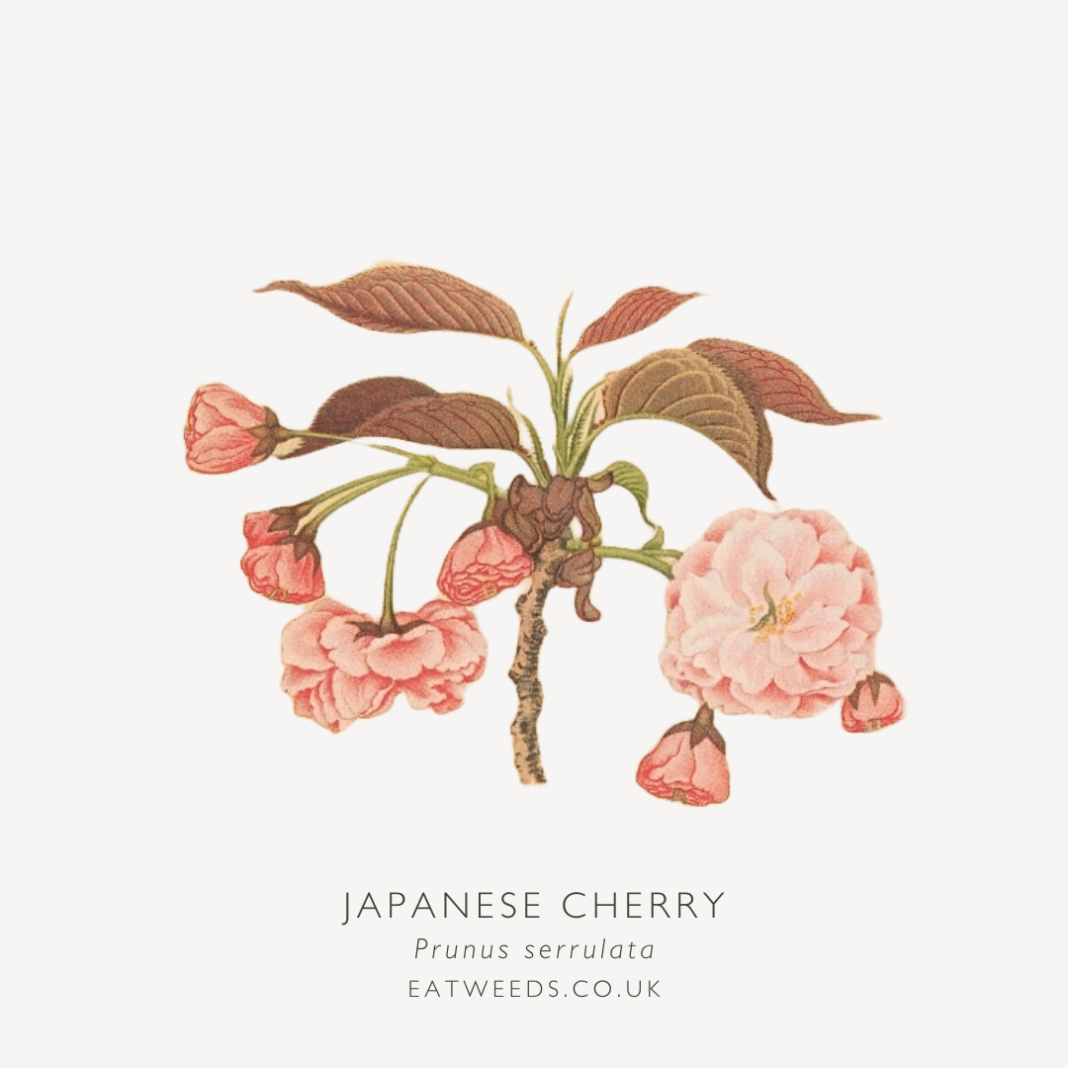Common name
Sakura cherry, Japanese cherry, Ornamental cherry
Scientific name
Prunus serrulata Lindl.
Family
Rosaceae
Botanical description
Sakura cherry is a deciduous tree that typically grows 20-40 feet tall with a spreading, rounded crown. The bark is smooth and grey, becoming fissured with age. Leaves are simple, alternate, ovate to obovate, 2-5 inches long, with serrated margins and acuminate tips. Flowers are pale pink to white, 1-1.5 inches in diameter, with 5 petals, and appear in clusters of 2-5 before the leaves emerge in spring. Fruits are small, globose drupes, red to black, and about 0.5 inches in diameter.
Status
Cultivated ornamental.
Habitat and distribution
Native to Japan, Korea, and China, but widely cultivated as an ornamental tree in temperate regions worldwide.
Parts used for food
Flowers: early spring; Leaves: spring to summer; Fruits: summer.
Food uses
Sakura flowers are pickled in salt and used as a condiment or garnish in Japanese cuisine. The leaves are used to wrap rice cakes or dumplings. The fruits are edible but not commonly consumed.
Nutritional profile
Sakura flowers contain anthocyanins, flavonoids, and phenolic acids. Nutritional data for other parts is limited.
Camellia Recipes
Traditional medicine uses
In traditional Chinese medicine, sakura flowers and bark have been used to treat coughs, allergies, and digestive issues.
Other uses
Sakura trees are widely cultivated as ornamental plants for their attractive flowers. The wood is used for woodworking and the production of small objects.
Safety notes
Sakura cherries are generally considered safe for consumption, but the seeds contain amygdalin, which can release cyanide when metabolised. Consuming large amounts of seeds may be harmful.
References
Acevedo, I. (2021). Sakura Storytellers: Cherry Blossoms as Indicators of Change in More-Than-Human Environments.
Facciola, S. (1998). Cornucopia II: A source book of edible plants. Kampong Publications.
Hosking, R. (2015). Dictionary of Japanese Food: Ingredients & Culture. Tuttle Publishing.
Kern, J. dePeiza. (2023). Sakura Storytellers. Arnold Arboretum.


